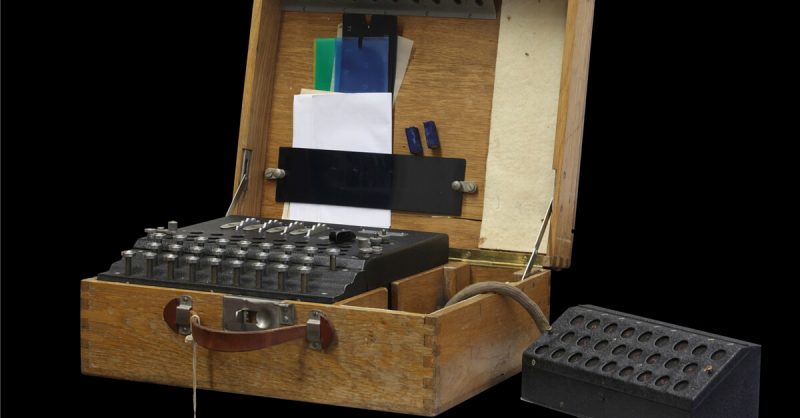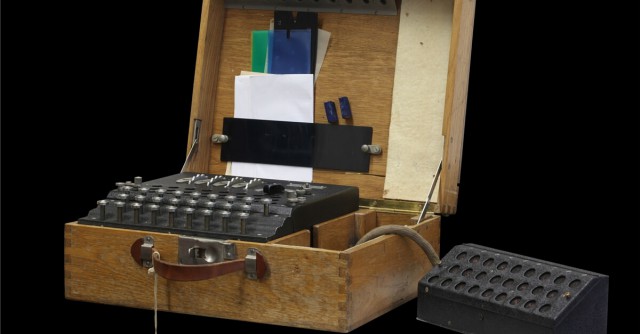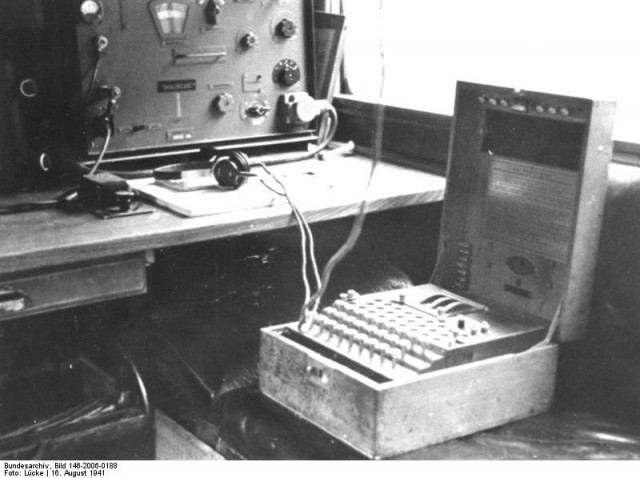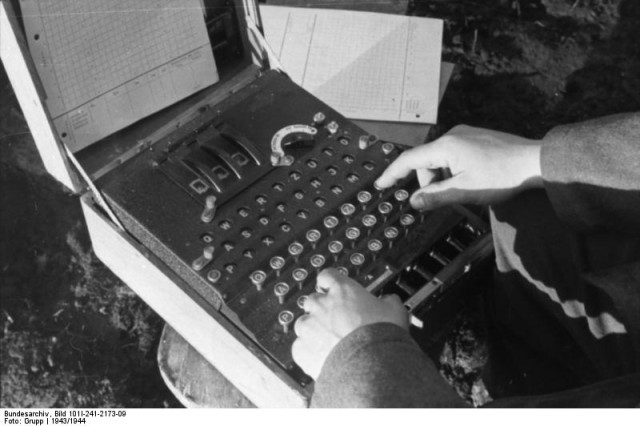Recently, one of the famous Enigma machines dating from the Second World War was taken to Letterkenny, a small town situated in the county of Donegal, in the far northern region of the Republic of Ireland. A presentation has been organised in Letterkenny where the machine has been displayed, and its workings demonstrated to visitors by Dr James Grime.
“Enigma” was the name given to the machine intended for encrypting information, constructed by a German inventor, Arthur Scherbius, at the end of the First World War, and put into production for commercial use.
After the first world war the machines were purchased by businesses; then, as the prospect of another war loomed across Europe, governments started taking an interest in military and espionage uses for the machine. In those pre-war years, many government teams were tasked with finding ways of using the device for encrypting their messages, while other teams were assigned the task of attempting to break the codes being developed by rivals and hostile governments.
From the early 1930s, the Nazi government of the German Third Reich took a particular interest in developing military applications for the Enigma machine. During this period, teams of decoders working in neighbouring Poland were the first in the world to manage to crack the cipher at the core of the machine’s encoding mechanism.
At this early stage, the encoding mechanism was relatively simple, and the Germans changed the cipher only every few weeks. By the end of the decade, however, the Germans had improved the complexity and security of the mechanism, and they were changing the ciphers several times per day. These developments had proved too great a challenge for the Poles, and the Germans had once again secured their military codes.
On the eve of the Nazi invasion of Poland and the outbreak of war, the Polish government quietly revealed to the French and British governments all their code-breaking knowledge and some of the machines they had been using to achieve their aims.
The British government stepped up its efforts to crack the codes. By the early 1940s, they were managing to work out the ciphers through the frenetic work of a large team of dedicated scientists, engineers, mathematicians, and psychologists stationed at Bletchley Park, a stately home that the government had acquired and occupied for the purpose.
With knowledge of the ciphers underlying the code, intelligence from secret communications by the German military and government officials could be gleaned by the British government in a programme code-named “Ultra”. This information provided foreknowledge about many of Germany’s military plans, so the Allies could adjust their offensive and defensive strategies accordingly. Not only that – a major operation was then set up to conceal the fact that the German codes had been broken, to remain one step ahead of the Germans. Besides great secrecy, this entailed laying false trails and using tactics of bluffing about what was known and what was not.
Images used:
“Enigma-IMG 0484-black” by Photograph by Rama, Wikimedia Commons, Cc-by-sa-2.0-fr. Licensed under CC BY-SA 2.0 fr via Commons.
“Bundesarchiv Bild 146-2006-0188, Verschlüsselungsgerät “Enigma”” by Bundesarchiv, Bild 146-2006-0188 / Lücke / CC-BY-SA 3.0. Licensed under CC BY-SA 3.0 de via Commons.
“Bundesarchiv Bild 101I-241-2173-09, Russland, Verschlüsselungsgerät Enigma” by Bundesarchiv, Bild 101I-241-2173-09 / Grupp / CC-BY-SA 3.0. Licensed under CC BY-SA 3.0 de via Commons.



